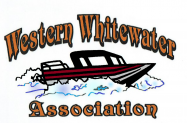The Federal Lands Recreational Enhancement Act (REA) is of interest to the WWA and its members, because this act authorizes Federal agencies to charge fees for the use of public lands that are already funded and supported through Federal income and other taxes. These fees have been dubbed Recreational Access Taxes or “RAT”s by many who are inpacted by the accessments. Jetboaters most commonly encounter these fees at U.S. Forest Service boat ramps and other National Forest access points.
Background
The REA is a direct descendant of the Recreational Fee Demonstration Program or “Fee Demo” as it was commonly known. The Fee Demo program was created by Congress in 1996. At that time, four Federal land management agencies — the National Park Service, U.S. Fish and Wildlife Service, the Bureau of Land Management, and the U.S. Forest Service — were authorized to implement and test new user fees at the recreation sites that they managed.
Fee Demo was initially implemented as a three-year experiment and scheduled to end on September 30, 1998; however, it was extended four times. Then on December 8, 2004, with the passage of the Federal Lands Recreation Enhancement Act (REA), Fee Demo was essentially converted into a new long-lived fee program with a ten-year authorization and covering five federal agencies. The Bureau of Reclamation was added as an authorized collection agency under the new program. A Summary of the REA can be viewed at the U.S. Forest Service Web site.
Under the REA, authorized agencies retain all of the fees collected, but must use at least 80% of the funds directly at the sites where they were collected. The remaining 20% can be used at other locations under the administrative jurisdiction of the collecting agency. Visit the Salmon-Challis National Forest Fee Demo Web page for additional information about Recreational Access Fees, or the National Recreation Fee page at U.S. Forest Service’s Web site.
The Crux of the Issue
At first glance, these user fees seem rather innocuous. They are only a few dollars, and they are to be used to develop and maintain facilities at the sites where they are collected. But, consider — a family of four on a four-day trip up the Salmon River into the Frank Church-River of No Return Wilderness. They pay $4 per person, per day – total $64 – to enter and use an area that has no Federally maintained facilities available for their use. They pack in everything they intend to use, and they pack it all back out. The only developed facility used was the boat ramp. In essence then, the Recreational Access Fee amounts to a boat launching fee that is 10 to 20 times greater than what would be charged at most other launch sites.
In fact, the crux of the issue for many jetboaters is not so much the amount of the fees, but rather the manner in which they are used and/or purported to be used. Many find it difficult to see any benefit from the money they lay out. The most frequent and possibly the most poignant question raised by jetboaters is the propriety of these fees in areas such as the Frank Church-River of No Return Wilderness. Under the REA, recreational enhancement fees are only to be assessed in areas where facilities and services are available to users. It is a natural question therefore whether these fees can be properly or even lawfully assessed for the use of areas where the construction of any facility or improvement is prohibited under Federal law. The Idaho National Forests Recreational Fee Demonstration Projects Summary can be viewed at the Forest Service Web site.
Since the enactment of the Recreation Fee Demonstration Program in 1996, there has been heated national debate over the legality of these programs as well as an on-going effort to repeal the legislation. The Fee Demo Page at wildwilderness.org maintains an arcade of articles from the beginning of the controversy up through the present.
